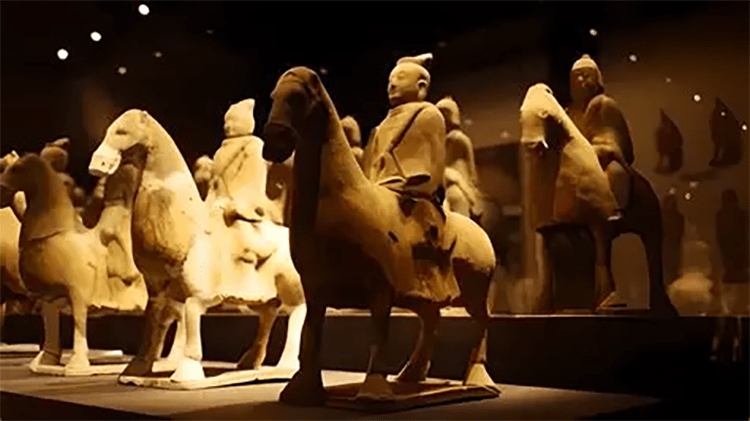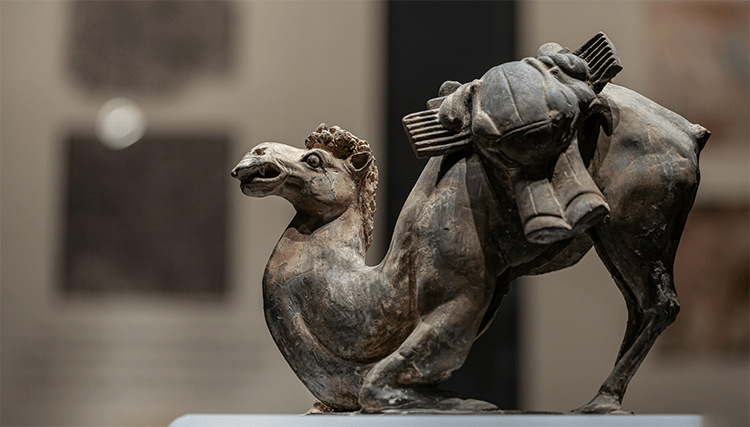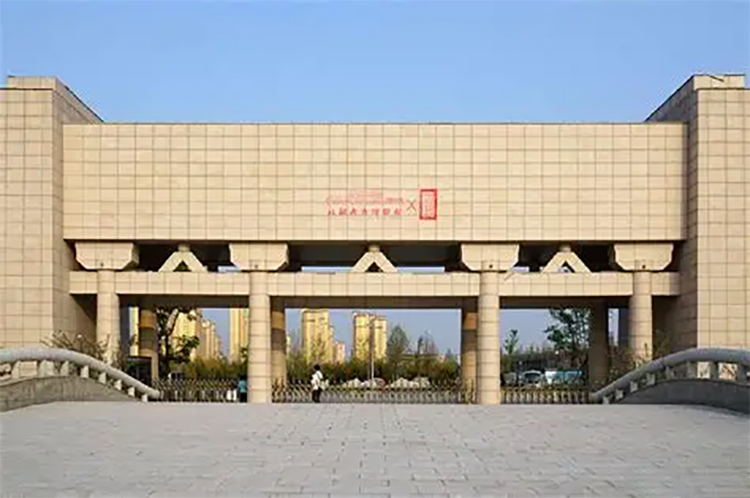Discover Terracotta Figurines from the Northern Dynasties at Hebei Archaeology Museum
Introduction:
When you step into the Hebei Northern Dynasties Archaeology Museum, time seems to roll back 1,500 years to an era of ethnic encounters and cultural fusion. This is the only museum in China specifically dedicated to Northern Dynasties culture. More than 3,000 artifacts are displayed like pieces of a giant puzzle, reassembling a vast historical panorama—from the terracotta figures unearthed at the Yecheng site to vividly pigmented Buddhist murals. The building itself references history with a streamlined exterior evoking the Copper Sparrow Terrace, while hidden digital technologies breathe new life into ancient objects.
1. Why it’s unique? The archive of Northern Dynasties culture
Opened in 2020, this thematic museum fills a gap in China’s museum landscape by focusing on the Eastern Wei–Northern Qi period (534–577 CE). Rather than offering a broad sweep, the museum centers on Yecheng archaeological discoveries and the crucial, often overlooked transition that set the stage for the Sui–Tang era. The curatorial theme, “Towards Sui and Tang,” explains how ethnic integration, the eastward spread of Buddhism, and administrative innovations made the Northern Dynasties a pivotal bridge in Chinese civilization.
The building is the first exhibit: modern steel and glass reinterpret the Northern Dynasties’ iconic Copper Sparrow Terrace. Inside, the museum avoids dimly lit rooms; natural light and smart lighting systems reveal the armor patterns of the terracotta figures and the mineral pigments of the murals with clarity.
2. Must-see treasures
• Terracotta “army” of figurines:
A formation of more than 1,500 terracotta figures creates an “underground legion.” Unlike the austere Qin terracotta army, these Eastern Wei–Northern Qi figures display rounded faces and mixed Xianbei–Han features, and include lively musician figurines—an immediate testament to the vibrant cultural blend after nomadic and Han contacts. Look closely: lotus motifs on horse saddles hint that Buddhist symbolism had entered daily life.
• Painted Buddhist sculptures and reliefs:
The Northern Dynasties were key to the Sinicization of Buddhist art. The gilded, painted standing Buddha at the center of the hall shows drapery flowing like waves and a restrained smile—already moving away from the Gandharan rigidity and towards the fuller forms later celebrated in the Tang. Nearby tomb mural fragments, rendered with cinnabar and azurite, depict flying apsaras whose ribbons echo motifs found in the Yungang Grottoes.

3. Exhibition narrative: three units to read the Northern Dynasties
① Glorious Imperial Capital: Centered on a model of Yecheng, this unit reconstructs the grid-like li-fang layout of an ancient Chinese planned city. Artifacts such as Copper Sparrow Terrace roof tiles and inscribed bricks reveal how Xianbei elites adopted Han governmental forms when founding their capital.
② Magnificent Tombs: Through funerary figurines, epitaphs, and grave goods, this section explains Northern Dynasties burial customs and attitudes toward the afterlife. Interactive screens let visitors virtually “enter” the tomb of Gao Yang of Northern Qi to examine a celestial dome star chart.
③ Vast Civilization: Showcasing glassware, coins, and silver from the Silk Road alongside a Han-authored Xianbei language primer (Guoyu), this unit documents two-way cultural shaping across peoples and trade networks.
4. Visitor experience: technology brings history within reach
• Digital enrichment: Point an AR device at a terracotta figure and its original paint is instantly restored on screen. Touchscreens allow 360° rotation of 3D Buddhist sculptures and reveal backlit relief details.
• Atmosphere and crowds: The museum usually attracts scholars and cultural travelers rather than noisy tour groups. High-ceilinged galleries space artifacts like stars across the sky—ideal for quiet, focused study.

5. Practical guide: efficient touring and deeper options
Suggested duration:
– Quick visit: 1.5 hours (focus on the terracotta formation, key Buddhist sculptures, and the Yecheng model)
– In-depth visit: 3+ hours (use digital interactives and read English captions carefully)
Recommended route:
First floor “Glorious Imperial Capital” → Second floor “Magnificent Tombs” (terracotta formation located here) → Third floor “Vast Civilization” → Exit digital experience zone
Tickets and services:
– Admission: permanent exhibition is free with reservation; special exhibitions about RMB 30
– English support: bilingual labels throughout; English audio guides available for rent (deposit RMB 200)
– Booking: reserve via the “Leyou Ji” WeChat mini program. Foreign visitors should exchange passports for tickets on site.
Transport tips:
– From Handan East Railway Station, take bus 802 to Linzhang Bus Station, then a 10-minute taxi ride to the museum.
– Driving: navigate to “Northern Dynasties Archaeology Museum”; parking is free.
Local insider tips:
– The abstract Copper Sparrow Terrace sculpture in the outer plaza makes a superb sunset photo.
– Closed on Mondays except during public holidays.

Conclusion:
The Hebei Northern Dynasties Archaeology Museum is a key to a history often glossed in textbooks yet full of dynamic undercurrents. Here, cold artifacts come alive through technology, and the abstract story of ethnic fusion becomes tangible in terracotta smiles and mural pigments. If your travels bring you to Handan, set aside half a day for this lesser-known but stunning museum— it may change how you understand the Northern Dynasties and the path to the Sui–Tang world.


